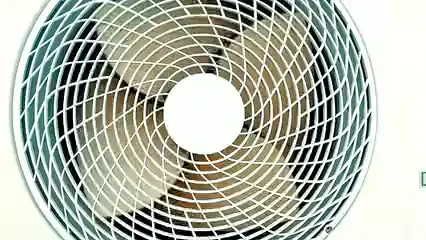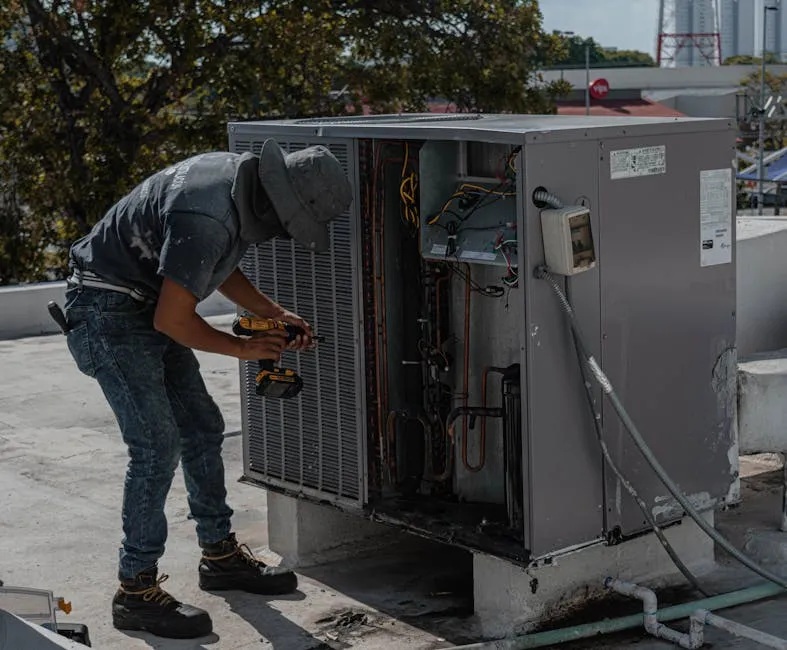
Why Is My Lifebreath Not Pulling Air from the Washroom?
Introduction
When you step into your washroom, you expect that refreshing breeze, not the stale air of yesterday’s shower. If your Lifebreath system isn’t pulling air from the washroom, it can be both puzzling and frustrating. Nobody wants to deal with humidity, odors, and potential mold when a functioning ventilation system could be the solution.
So, what gives? First, let’s understand that Lifebreath systems are designed to maintain air quality. They should efficiently pull stale air out and bring fresh air in. However, several factors can interfere with this process.
Imagine taking a deep breath and inhaling nothing but musty air. Ugh! That’s why we’re here. In this article, we’ll tackle the common reasons your Lifebreath system fails to draw air from the washroom. We’ll also provide actionable troubleshooting tips. Whether it’s a minor glitch or a bigger issue, we’ve got your back. Grab a towel, sit back, and let’s unravel the mystery of your home’s ventilation system!
Don’t worry; we’ll make this as entertaining as it is informative. So, prepare for a whirlwind of insights that could leave your air fresh and your mind at ease. After all, who wants to be the person who lets their washroom air go stale? Let’s fix that and get your Lifebreath system back in action!

Summary Section
In this article, we will cover essential aspects of why your Lifebreath ventilation system might not be pulling air from your washroom. We’ll begin by explaining what Lifebreath systems are and how they function. We’ll focus on their role in maintaining air quality in your home.
Next, we’ll examine common reasons for inadequate airflow, from clogged ducts to improper installation and faulty components. We will also provide a step-by-step troubleshooting guide to help you identify and resolve issues yourself. If all else fails, we’ll discuss when it’s time to call in a professional.
Lastly, we will offer maintenance tips to keep your system running smoothly. By the end of this article, you’ll understand the potential reasons for the lack of airflow and be empowered to take action for a fresher, healthier home environment. With the right knowledge, you can ensure that your washroom remains a sanctuary of cleanliness and comfort!

What Is a Lifebreath System and How Does It Work?
Overview of Lifebreath Systems
Lifebreath systems are the hidden heroes of home ventilation. They keep your indoor air fresh and comfortable, especially in spaces like washrooms, kitchens, and laundry rooms. At their core, these systems typically feature either a Heat Recovery Ventilator (HRV) or an Energy Recovery Ventilator (ERV).
HRVs are designed to transfer heat from outgoing air to incoming air while maintaining humidity levels. On the other hand, ERVs do the same but also manage moisture. Both systems work tirelessly to replace stale, humid air with fresh, clean air, providing essential comfort in your living space.
Imagine coming home after a long day and stepping into your washroom, only to be greeted by a stuffy atmosphere. Not ideal, right? Lifebreath systems tackle that issue head-on, ensuring you breathe easy.
To keep that fresh air flowing, consider investing in a Lifebreath HRV System. It’s designed to seamlessly integrate into your home, providing optimal ventilation while keeping energy costs low. Who doesn’t want fresher air and lower bills?

How Lifebreath Systems Work
So, how do these systems function? Picture this: stale air exits your home through strategically placed ducts. As it leaves, the Lifebreath system pulls in fresh air from outdoors. But wait! Before that fresh air enters your home, it passes through a heat exchange core where the outgoing air transfers its heat to the incoming cooler air.
This process keeps your home’s temperature stable while preventing energy loss. In washrooms, this is crucial for controlling humidity and odors. When you take a hot shower, that moisture-filled air needs to escape. The Lifebreath system steps in, pulling that damp air out while drawing fresh air in. It’s like a breath of fresh air for your home, literally!
By efficiently managing air circulation, Lifebreath systems ensure your washroom remains a pleasant oasis rather than a humid cave. Keeping air flowing and fresh prevents the growth of mold and mildew, promoting a healthier home environment.

Common Reasons Why Your Lifebreath Isn’t Pulling Air from the Washroom
Clogged or Blocked Ducts
Over time, dust and debris love to party in your ducts. This buildup can significantly reduce airflow. Bathroom humidity makes it worse, as moisture encourages gunk to stick. Even a small blockage can turn your Lifebreath system from a fresh air champion to a stale air collector. Checking and cleaning these ducts regularly is essential for optimal airflow.
Improper Installation
If your Lifebreath system had a hasty installation, you might face airflow issues. Ducts that are too small, poorly sealed, or bent can create serious airflow blockages. Installation errors can turn your home’s ventilation system into a game of hide-and-seek, where fresh air is always hiding!
Exhaust Vent Problems
Your washroom’s exhaust vent is like the bouncer at a club—if it’s not doing its job, things can get sticky. A blocked or malfunctioning exhaust vent can prevent air from being pulled out of the washroom. If the vent fan is not functioning properly, it’s time to investigate.
Faulty Components
When components like damper motors or fans malfunction, your Lifebreath system might not perform as it should. These parts are crucial for directing airflow. Issues with them can lead to ineffective ventilation. Users in online forums often report similar problems, emphasizing the importance of checking these components regularly to maintain airflow efficiency.
Understanding these common issues is vital for keeping your Lifebreath system in top shape. Regular maintenance and troubleshooting can help you identify problems early, ensuring your washroom remains a fresh and inviting space.

How to Troubleshoot Your Lifebreath System
Check the Ducts and Vents
First things first, let’s check those ducts and vents. You wouldn’t believe the stuff that can clog them! Here’s a step-by-step guide to get you started:
1. Turn Off the System: Safety first! Ensure your Lifebreath system is powered down before you start poking around.
2. Inspect Visible Ducts: Look for any visible signs of blockage. Dust bunnies and debris might be lurking where you least expect them.
3. Use a Vacuum: Grab a vacuum cleaner with hose attachment. Clean out any visible debris from the ducts. Don’t forget the vents!
4. Check Vents for Obstructions: Remove any vent covers and check for blockages. A quick dusting can work wonders.
5. Reassemble and Turn On: Put everything back together, power up your system, and see if airflow improves. Fingers crossed!

Inspect the Filters
Now, let’s talk about those filters. They’re the unsung heroes of your Lifebreath system. If they’re clogged, airflow will be as smooth as molasses. Here’s how to manage filter maintenance:
1. Locate the Filters: Find where your Lifebreath system stores its filters. Usually, they’re easy to spot.
2. Remove and Inspect: Take the filters out and give them a good look. If they resemble a dust-covered sponge, it’s time for a clean-up.
3. Clean or Replace: If they’re washable, rinse them gently under water. Otherwise, replace them with new filters. Aim for the “clean air” vibe!
4. Regular Maintenance: Make this a habit! Check filters every month, especially during high-use seasons. Clean or replace as needed.
Keeping those filters clean is crucial. It can significantly impact airflow and overall efficiency. Plus, you might want to consider stocking up on an air filter replacement pack to make your life easier!

Examine the Damper and Fan
Finally, let’s turn our attention to the damper and fan. These two are like the dynamic duo of your Lifebreath system. If they’re not working right, you’ll notice! Here’s how to check their functionality:
1. Listen to the Fan: Turn on your Lifebreath system and listen closely. Is the fan making a humming noise? If so, it’s likely operational.
2. Check the Damper: Open the access panel to the unit. Is the damper opening up as it should? If it’s stuck closed, that’s a big red flag.
3. Manual Intervention: If the damper isn’t budging, try gently pushing it open. Sometimes, it just needs a little encouragement.
4. Look for Signs of Damage: Inspect the damper and fan for any visible damage. If you spot cracks or anything unusual, it might be time for a replacement.
5. Monitor Performance: After checking both components, observe how your system performs. If airflow improves, you’re on the right track!
Taking these steps can help you get your Lifebreath system back in action. Regular checks and maintenance can save you from bigger headaches down the line.

When to Call a Professional
Signs You Need Expert Help
Sometimes, troubleshooting can feel like a game of whack-a-mole with all the issues popping up! If you notice any of the following signs, it’s time to call in the pros:
1. Persistent Airflow Issues: If you’ve followed all the troubleshooting tips and airflow is still lacking, don’t hesitate to call an HVAC technician.
2. Strange Noises: Unusual sounds coming from your Lifebreath system? It might indicate a mechanical issue that needs professional diagnosis.
3. Increased Energy Bills: If your energy bills are creeping up without explanation, your system may not be running efficiently. A technician can help identify the culprit.
4. Frequent System Cycling: If your system is turning on and off more frequently than usual, it could signal an underlying problem needing attention.

Complex Repairs
Some issues require more than a DIY approach. If you encounter any of these problems, consider getting professional help:
1. Fan Motor Replacements: If the fan motor is faulty, it often needs replacing. This isn’t a job for the faint of heart!
2. Damper Motor Issues: If the damper motor is malfunctioning, a technician can diagnose and fix the issue properly.
3. Duct System Overhaul: If your ductwork is severely damaged or improperly installed, a professional can assess and make necessary adjustments.
4. Electrical Problems: Any electrical issues should be handled by a certified technician. Safety is paramount!
Knowing when to call in an expert can save you time, money, and frustration. With their experience, they can tackle complex problems you may not want to face alone. Keep your home’s air fresh and flowing!

How to Keep Your Lifebreath System in Good Shape
Regular Maintenance Tips
To ensure your Lifebreath system operates efficiently, regular maintenance is essential. Here are some handy tips to keep it in tip-top shape:
1. Clean Filters: Check your filters monthly. Replace or clean them as needed. Dirty filters restrict airflow, making your system work harder.
2. Inspect Ducts: Look for any blockages or buildup in ducts. A vacuum with a hose attachment can help clear out dust and debris.
3. Check Vents: Ensure all vents are unobstructed. Furniture, curtains, or other items can block airflow.
4. Keep Exterior Units Clear: If you have intake and exhaust hoods outside, ensure they’re free from snow, leaves, or other debris. A clear path means better airflow!
5. Monitor Humidity Levels: Use a hygrometer for measuring humidity levels to keep an eye on humidity. Ideally, it should stay between 30-50%. High humidity can indicate issues with your Lifebreath system.
6. Listen for Unusual Noises: Strange sounds can hint at a malfunction. If you hear anything out of the ordinary, take a closer look or consult a pro.
By following these tips, you’ll help your Lifebreath system stay efficient and effective, ensuring fresh air circulates throughout your home.

Annual Inspections
Scheduling annual inspections is a smart way to catch potential hiccups early. A professional can identify issues that may not be evident during routine checks. Here’s why these inspections are beneficial:
1. Early Problem Detection: Technicians can spot minor issues before they become major headaches. A small fix today can save you from costly repairs tomorrow.
2. Optimal Performance: Regular check-ups ensure that your Lifebreath system runs at its best. Efficiency translates to lower energy bills and better air quality.
3. Expert Advice: Professionals can provide valuable insights tailored to your system and home. They can recommend upgrades or modifications to enhance performance.
4. Warranty Compliance: Many warranties require annual inspections. Keeping up with this ensures you stay covered in case of failures.
5. Peace of Mind: Knowing your system is in good hands offers reassurance that your home will remain a fresh, comfortable environment.

FAQs
What is the ideal airflow rate for a washroom?
The recommended airflow rate for washrooms is crucial for effective ventilation. Generally, you want to aim for at least 50 CFM (Cubic Feet per Minute) for standard bathrooms. Larger bathrooms may need more—up to 100 CFM for optimal air exchange. This ensures that moisture and odors are efficiently removed, preventing issues like mold and mildew. By maintaining the right airflow, you can keep your washroom fresh and comfortable, making your daily routine a breeze!
Can I use a regular exhaust fan instead of a Lifebreath system?
While a regular exhaust fan might seem like a quick fix, it’s not a one-size-fits-all solution. Regular fans primarily expel air but do not provide the balanced ventilation that Lifebreath systems offer. Lifebreath systems are designed to pull stale air out while bringing fresh air in, promoting better indoor air quality. They also manage humidity levels effectively, reducing the risk of moisture-related issues. So, if you want the best for your home, a dedicated system like Lifebreath is worth considering.
How often should I replace Lifebreath filters?
Filter maintenance is key to keeping your Lifebreath system running smoothly. Generally, it’s recommended to check your filters every 1-3 months. If they look dirty or clogged, it’s time for a replacement. Regular replacements help maintain optimal airflow and efficiency. Neglecting this can lead to reduced performance and increased energy costs. Keeping a clean filter can make a noticeable difference in your home’s air quality, so set a reminder to check them regularly.
What should I do if my Lifebreath system continues to malfunction?
If your Lifebreath system is still acting up despite your troubleshooting efforts, it might be time to call in the professionals. Persistent issues could indicate deeper problems, such as mechanical failures or system design flaws that require expert insight. Always prioritize safety and efficiency. A qualified technician can diagnose the issue accurately and suggest the best course of action. Remember, timely intervention can save you from larger repair costs down the road!
Please let us know what you think about our content by leaving a comment down below!
Thank you for reading till here 🙂
If you’re dealing with bruxism, understanding the importance of ventilation can be crucial. Why is seeking professional help crucial for managing bruxism in the coming months?
And while you’re at it, why not brighten up your home with some energy-efficient light bulbs? They not only save energy but can also enhance the ambiance of your fresh, ventilated washroom!
All images from Pexels




